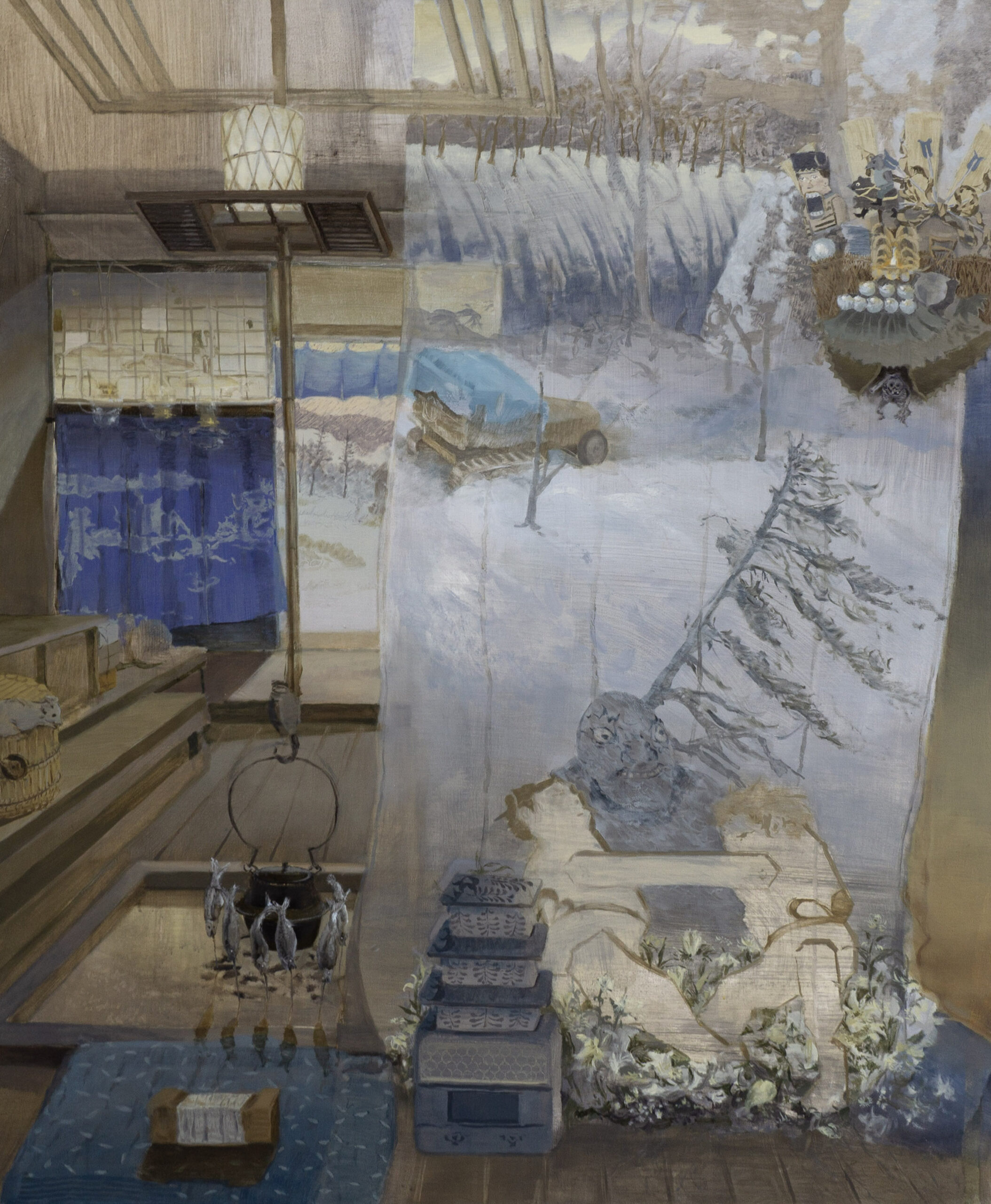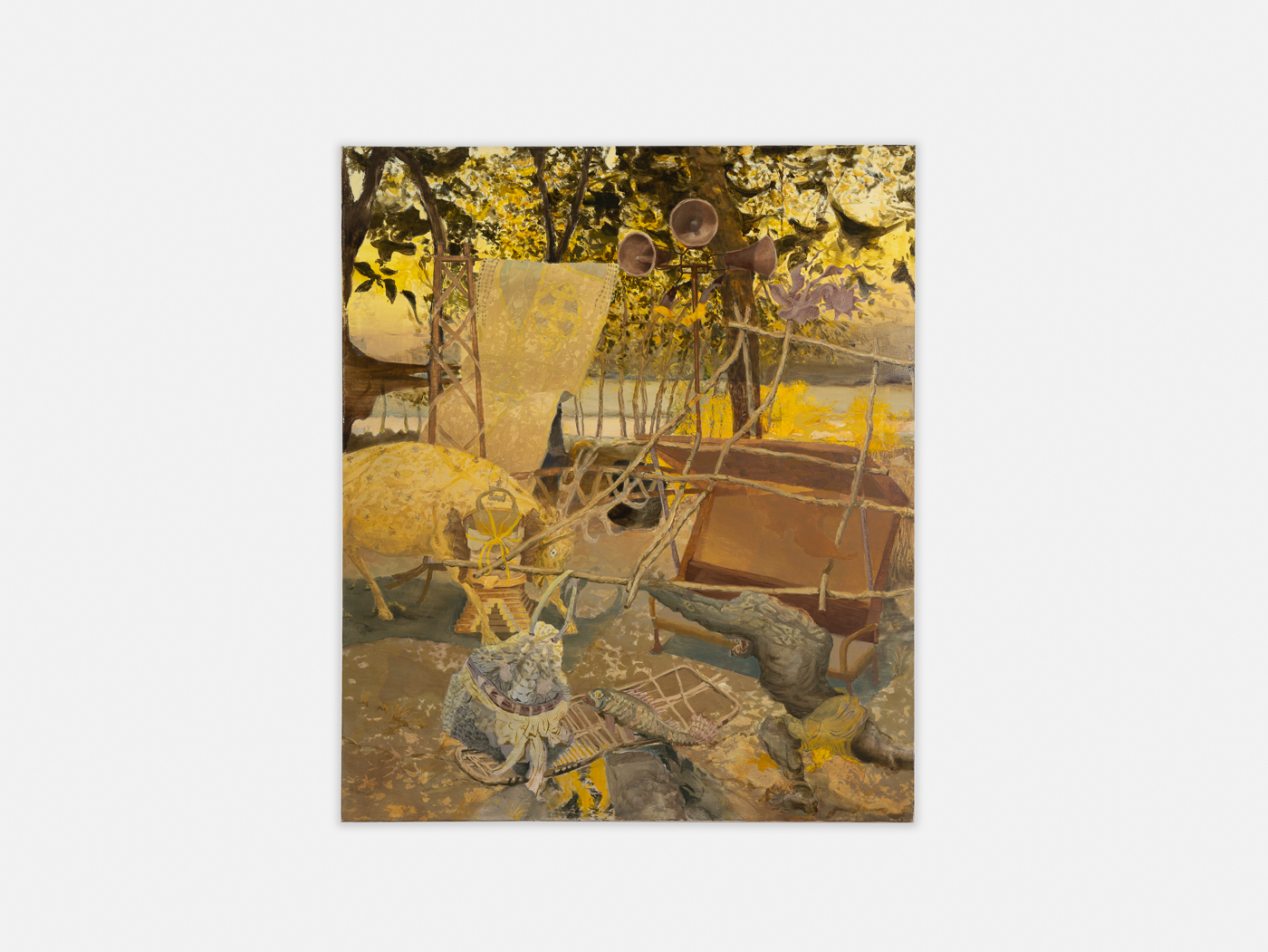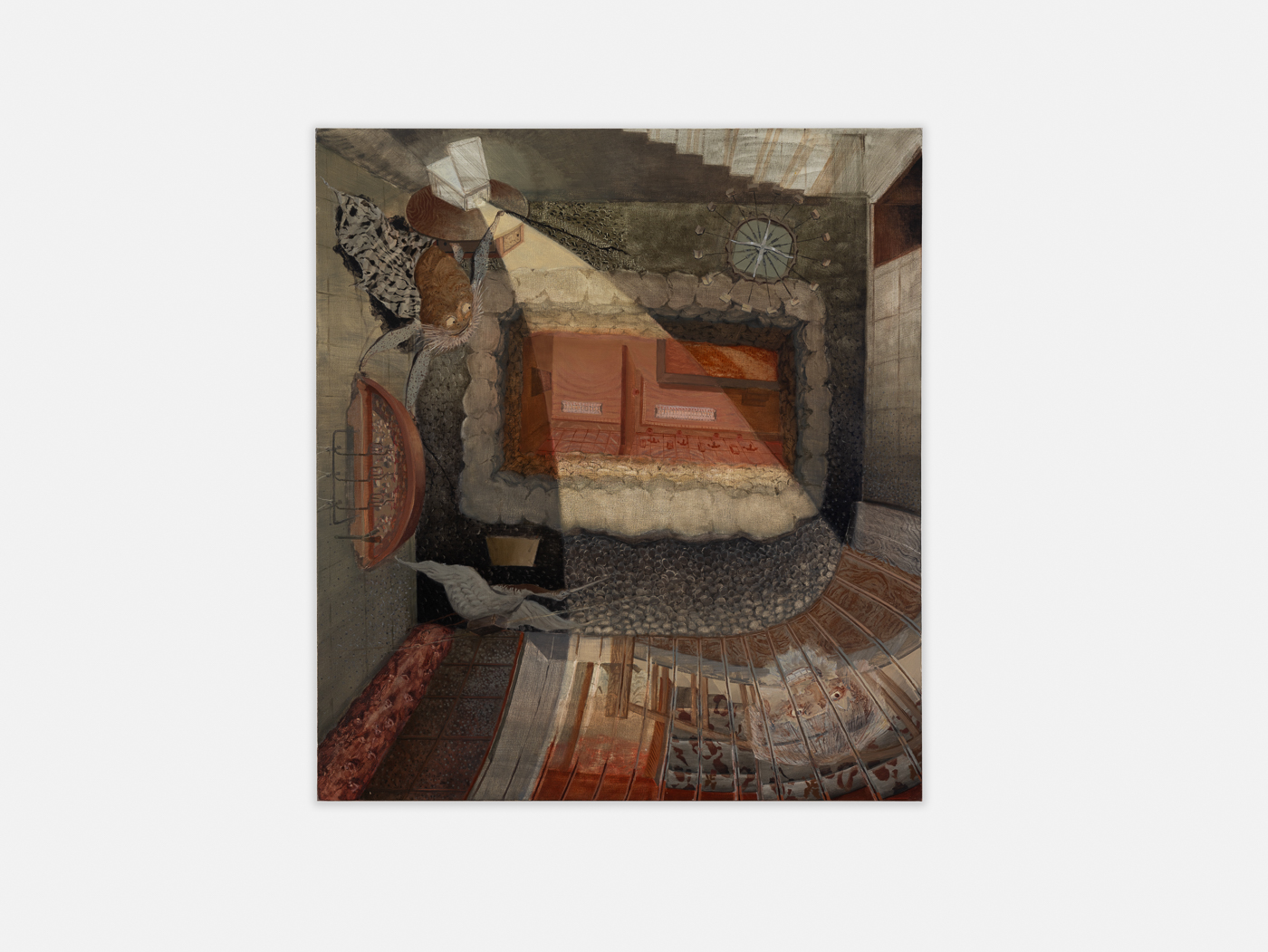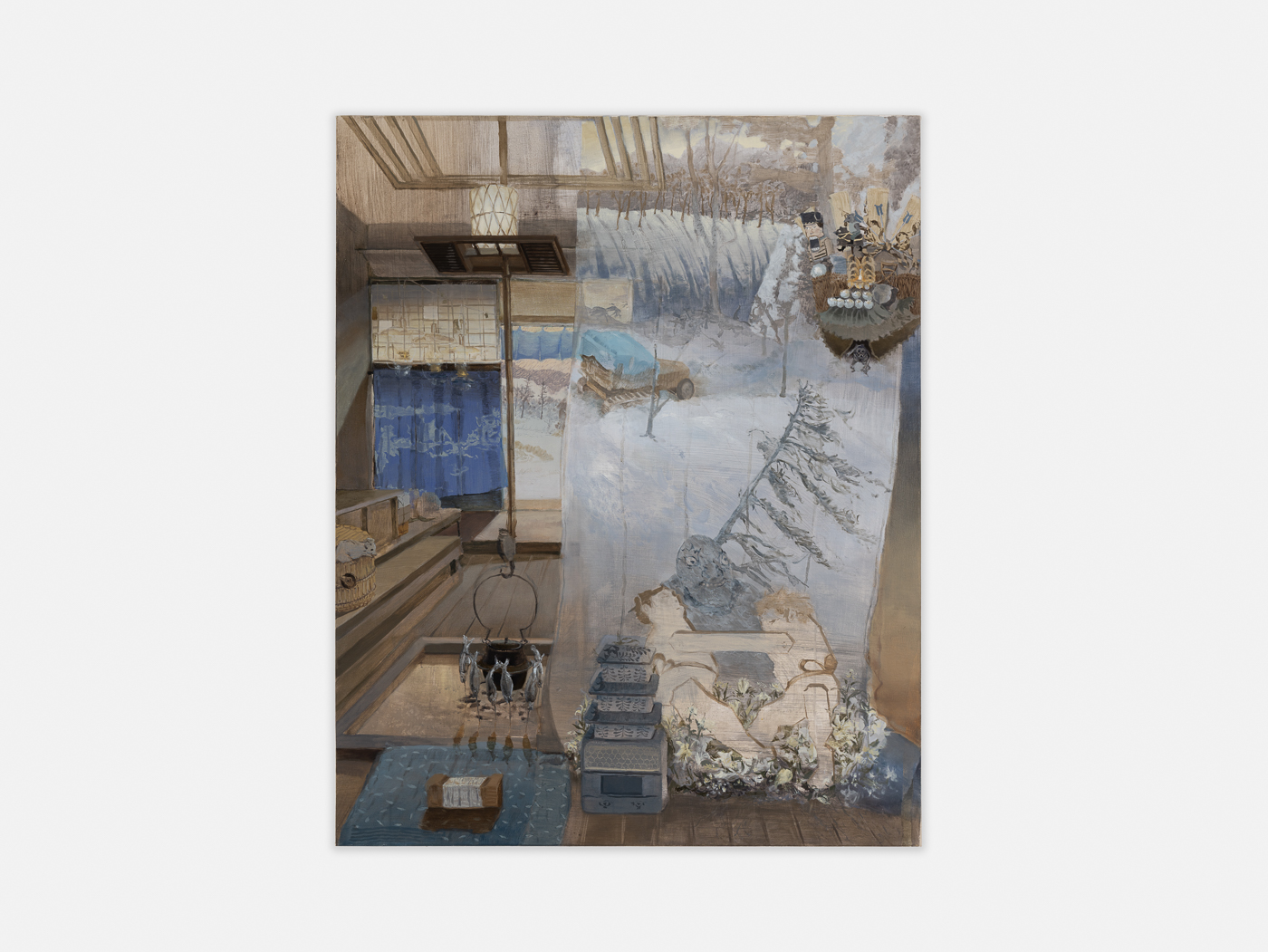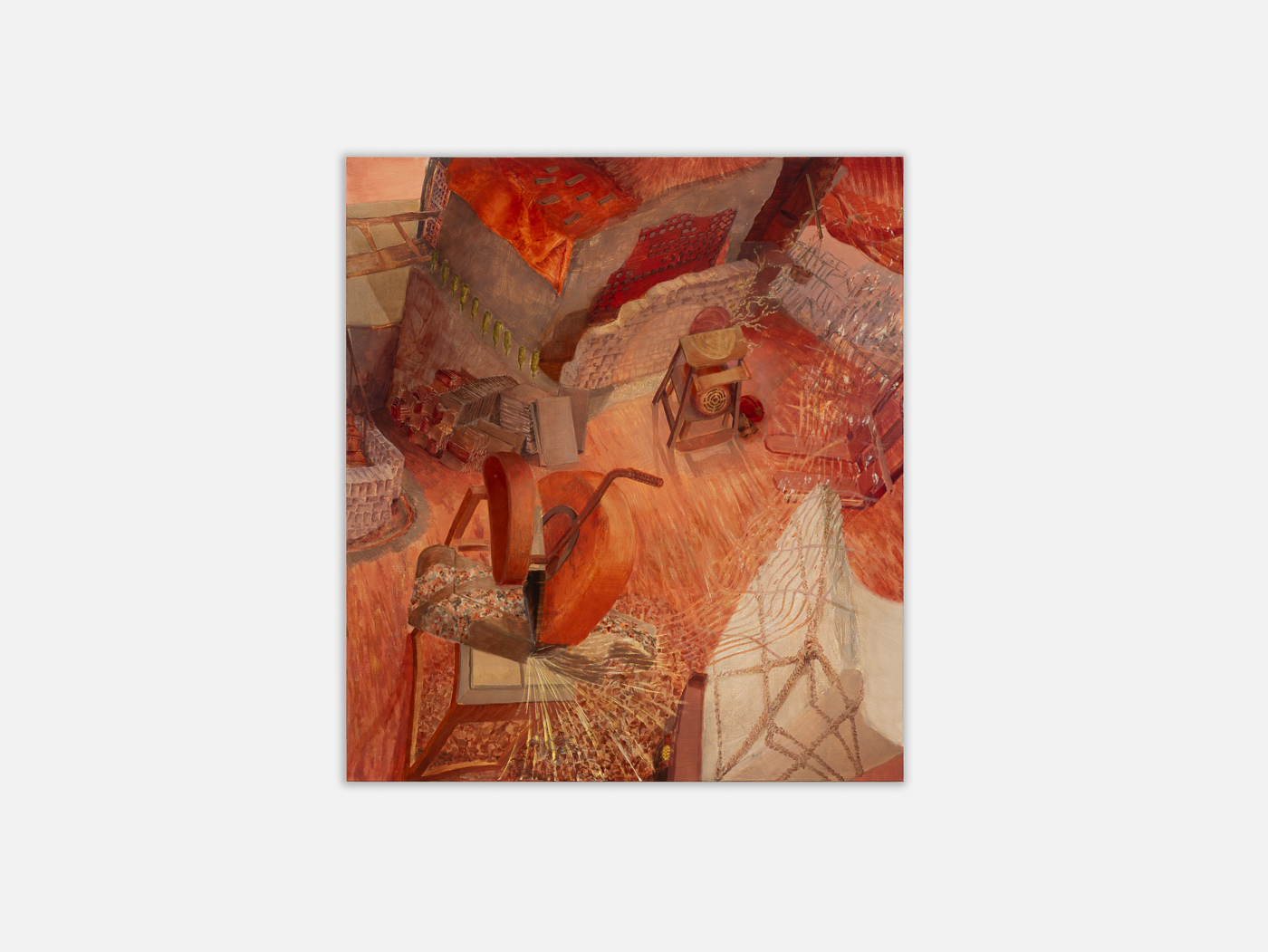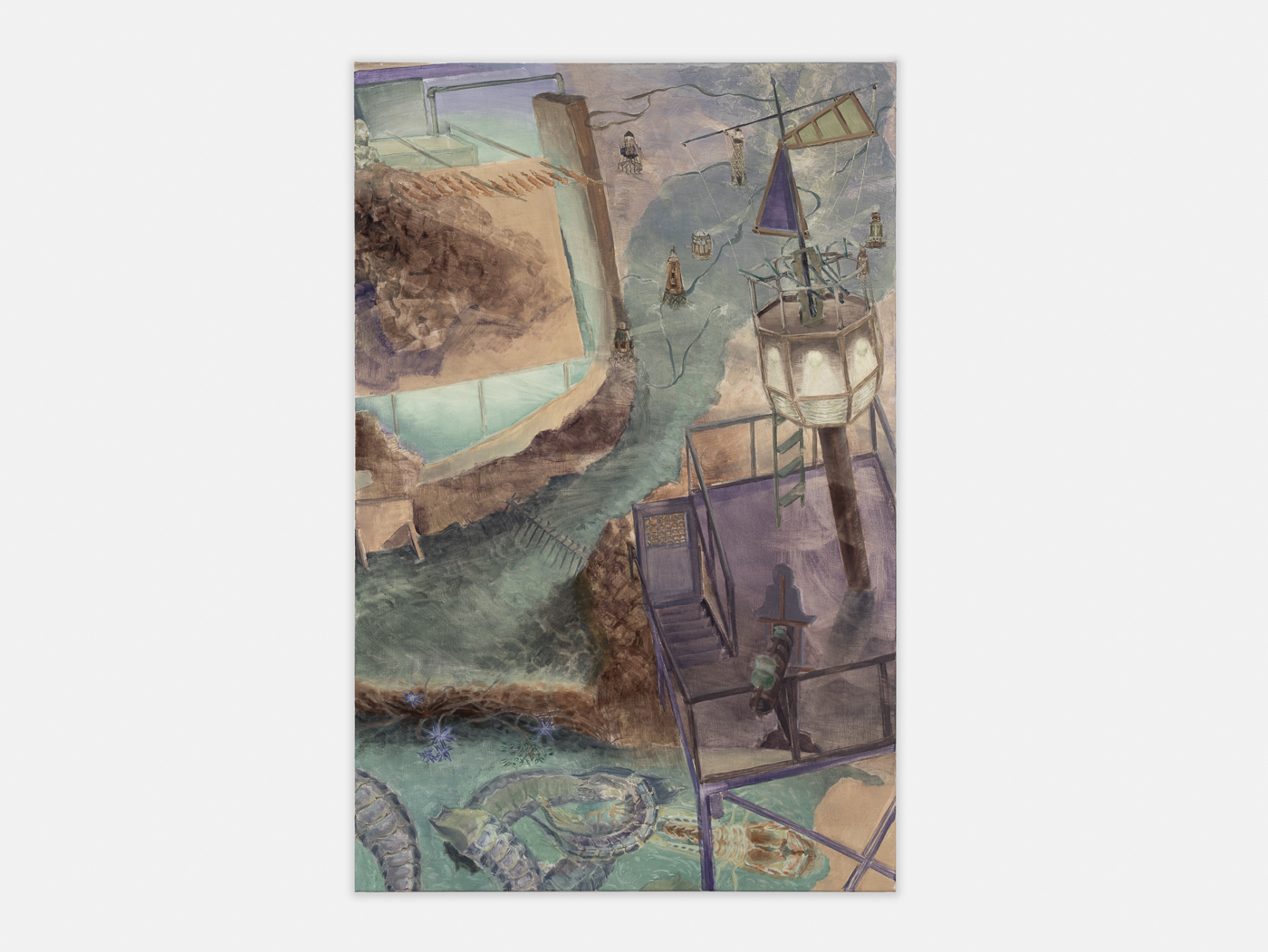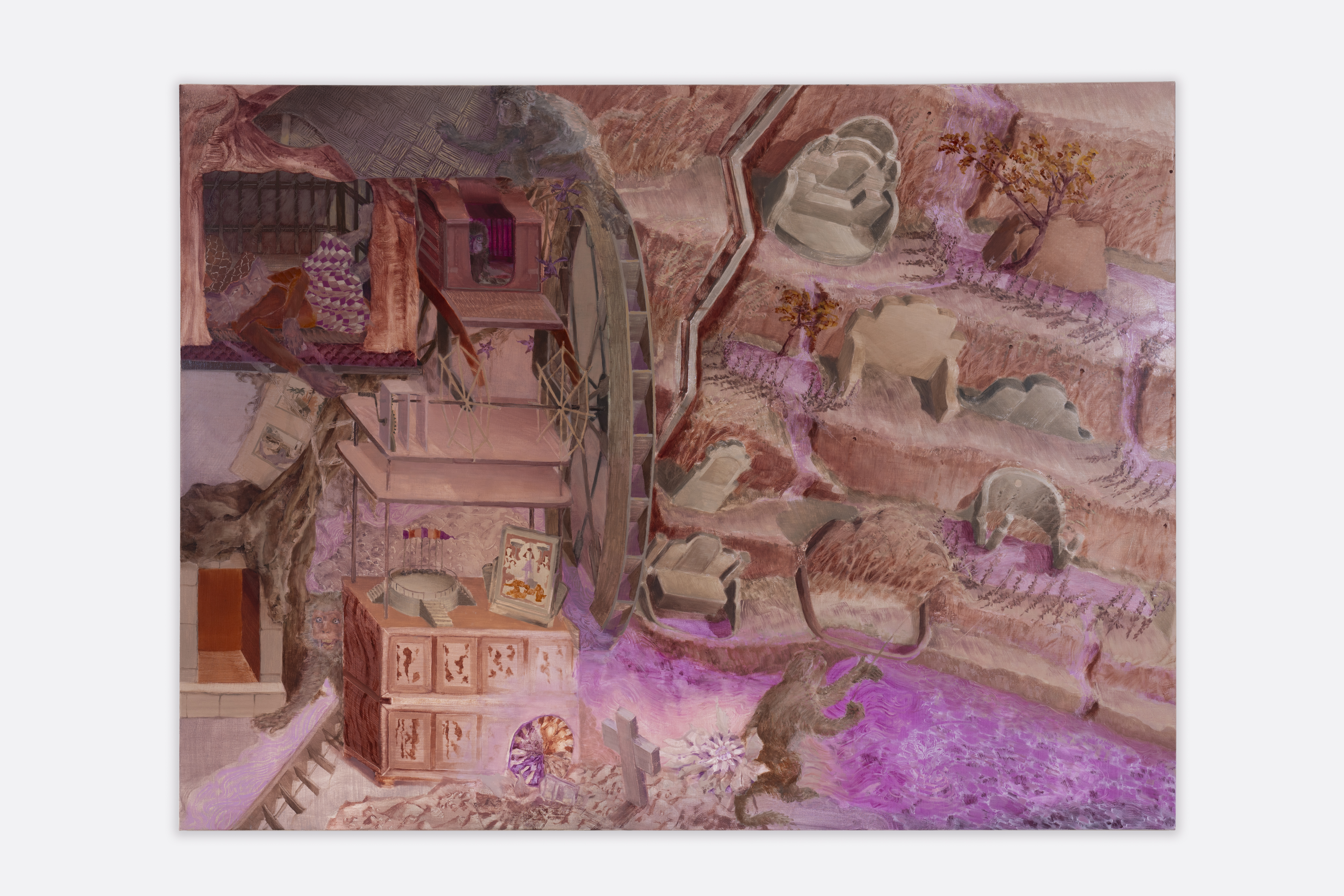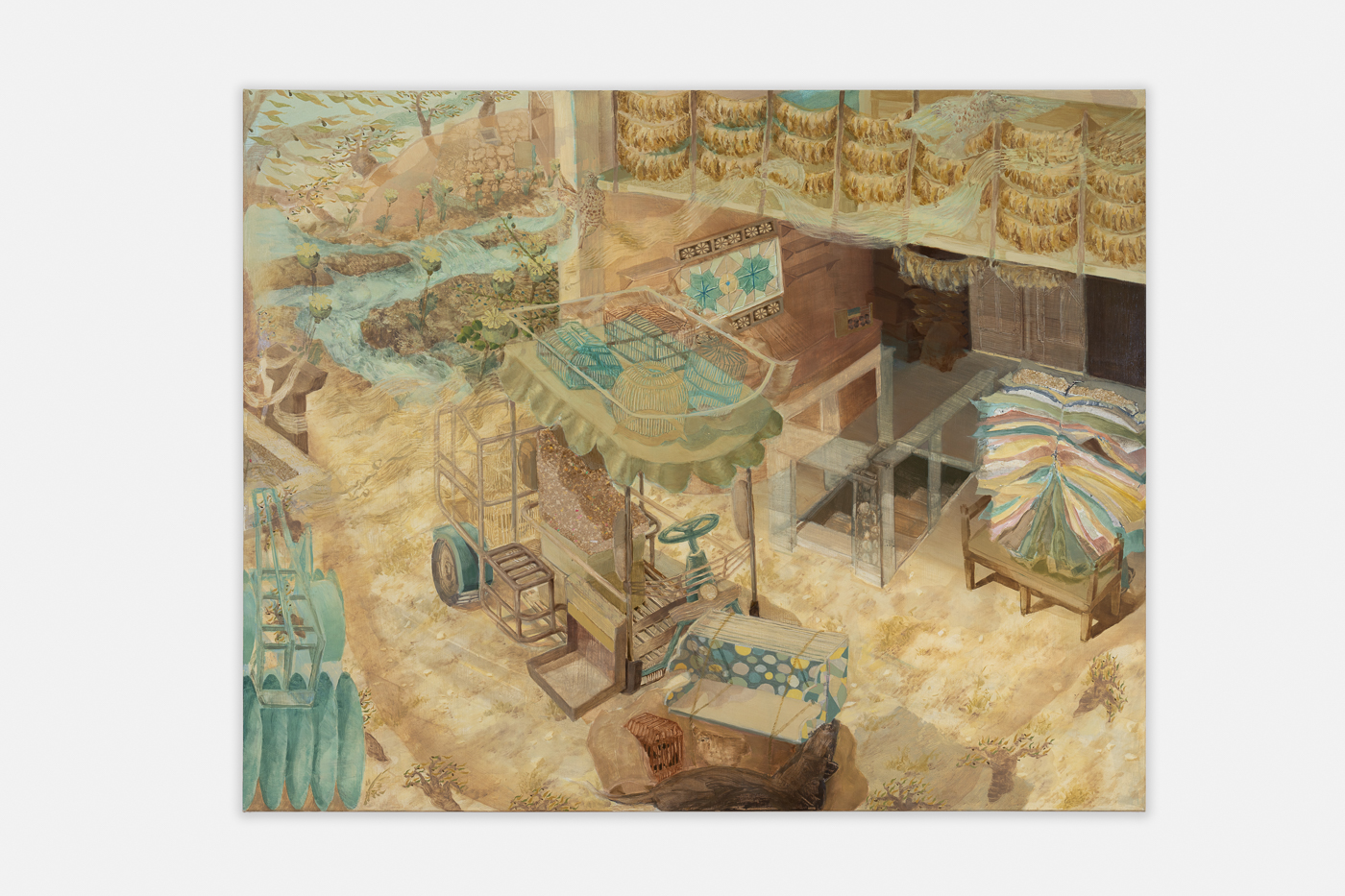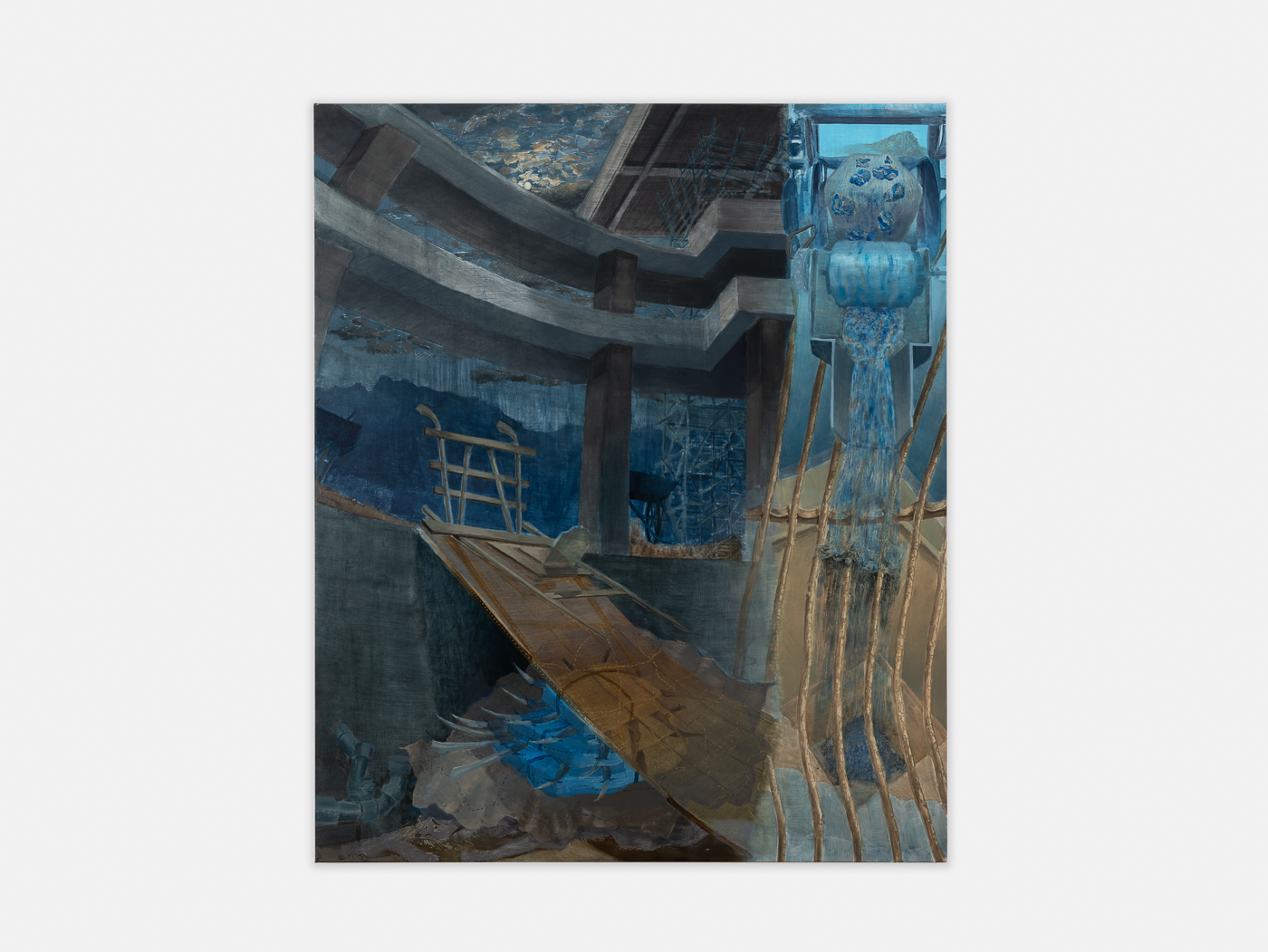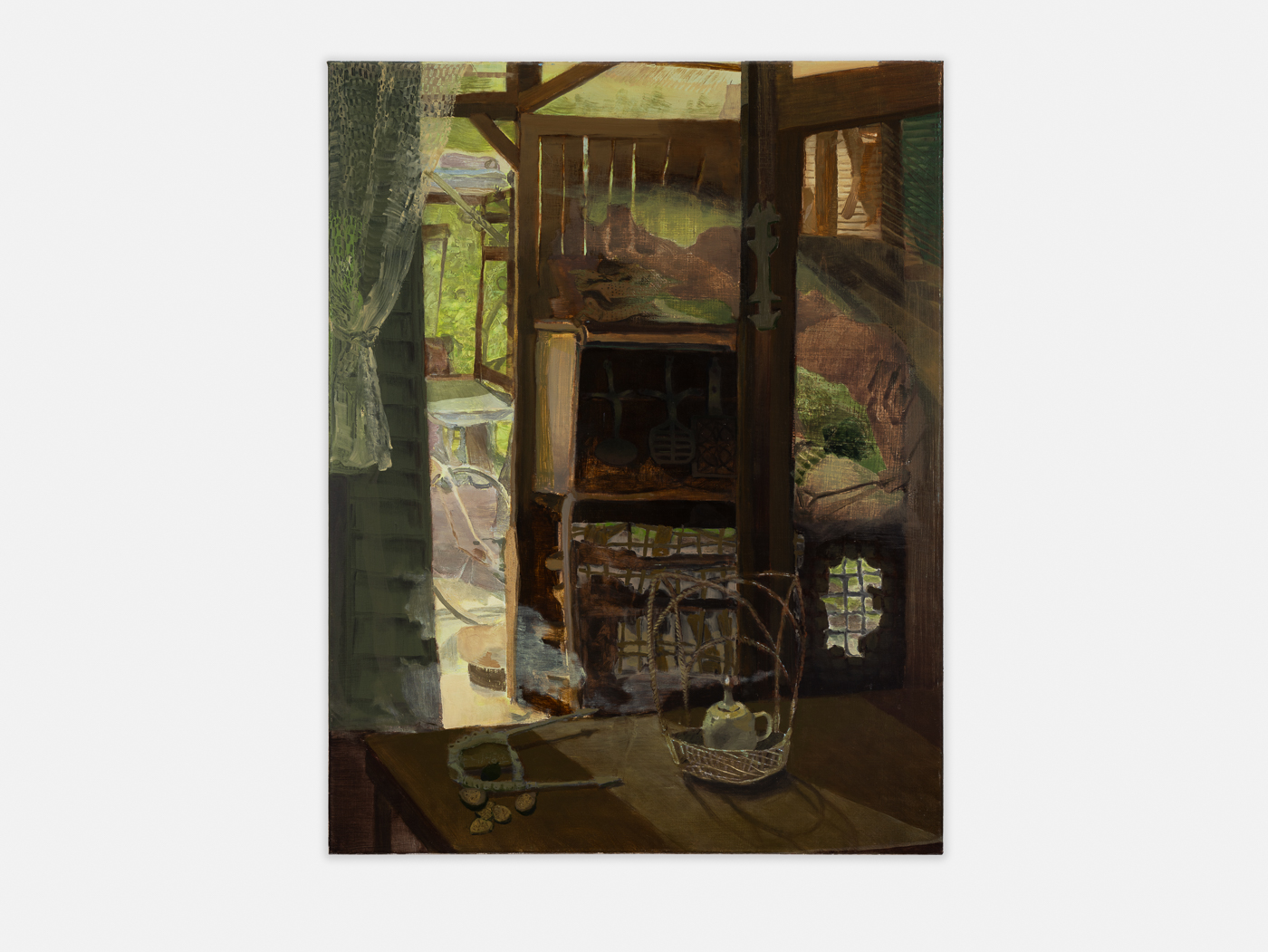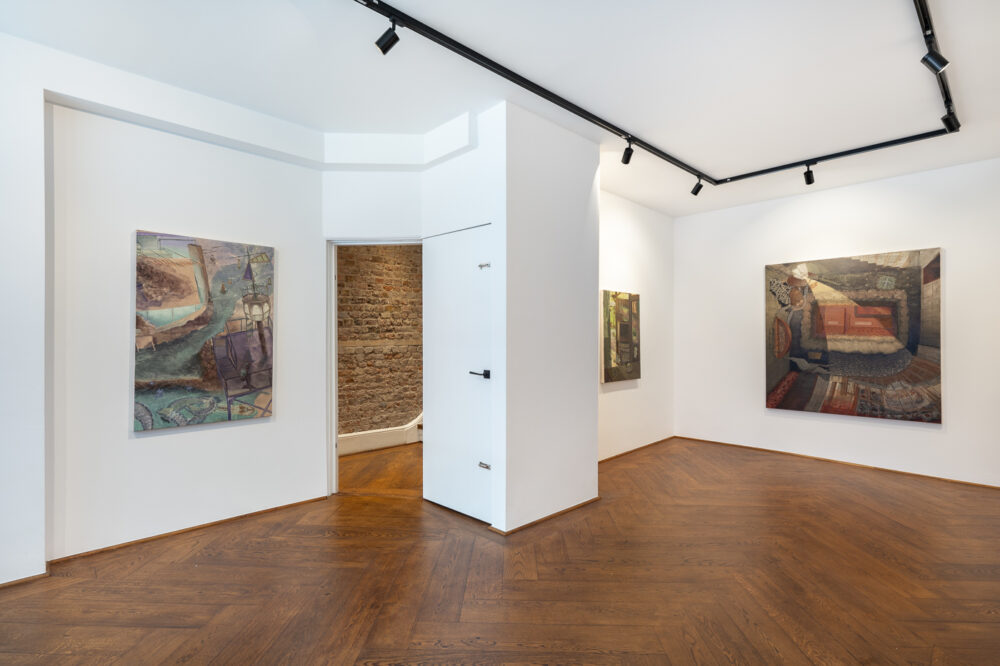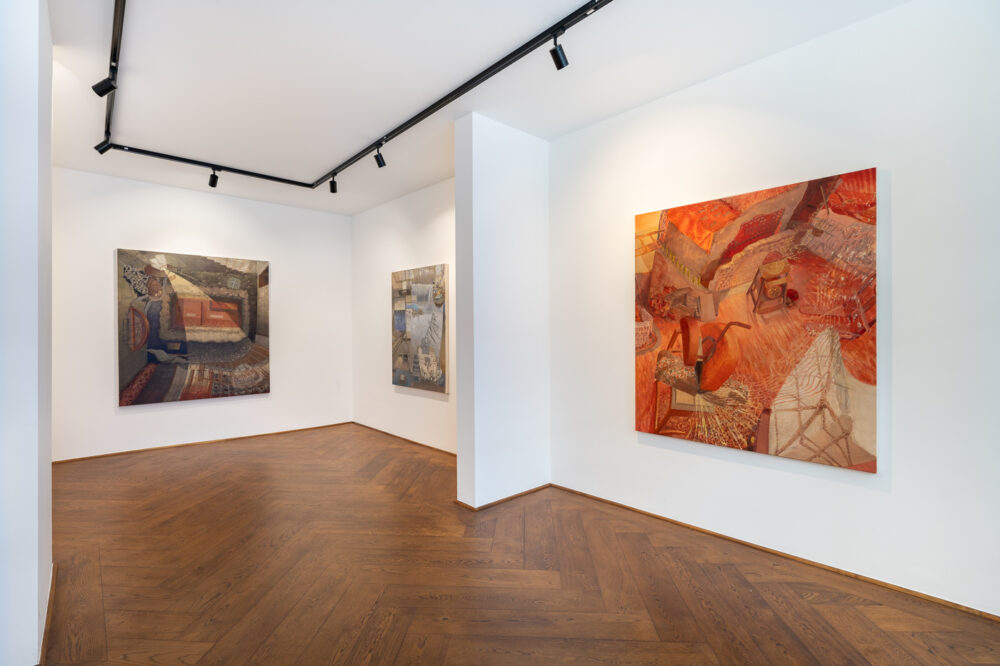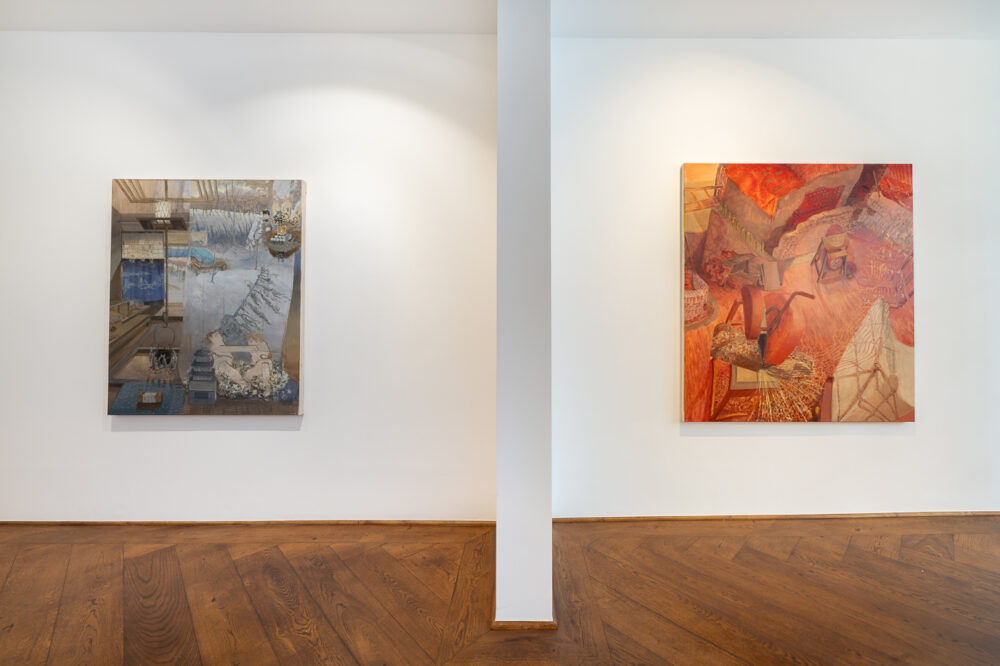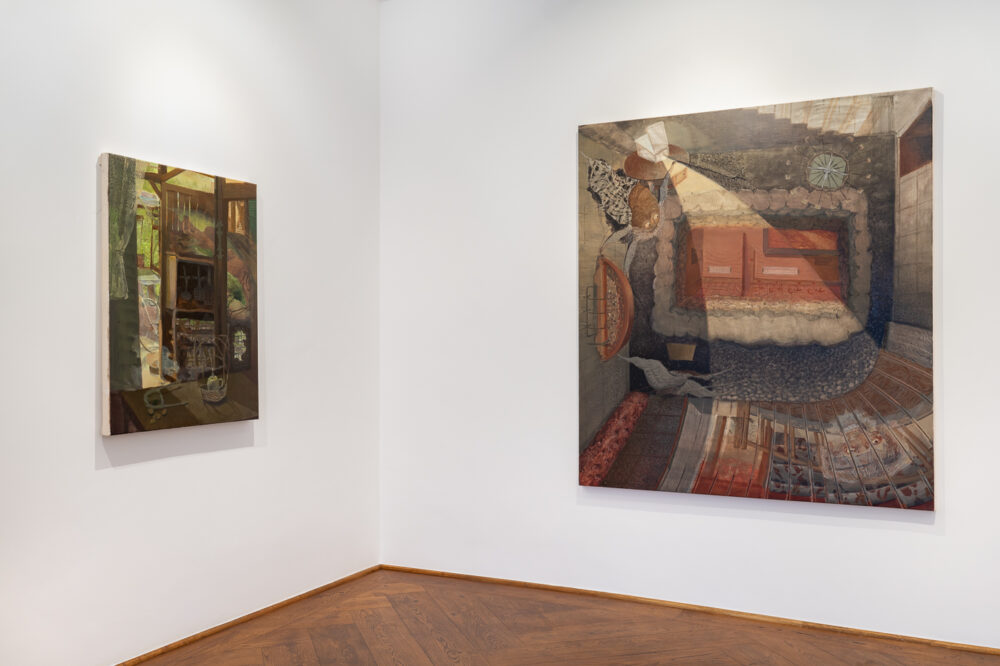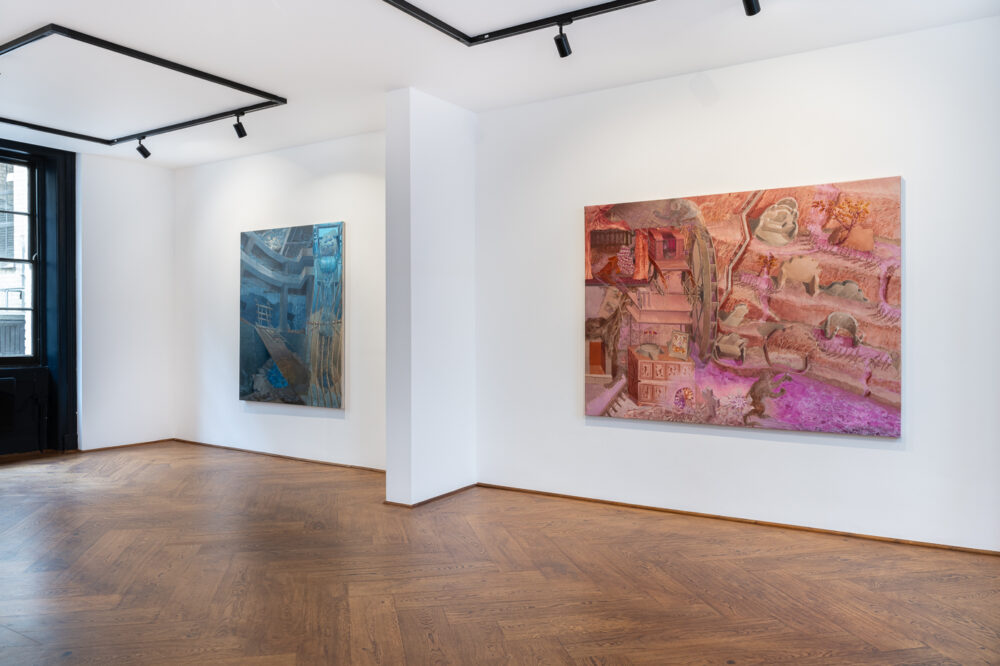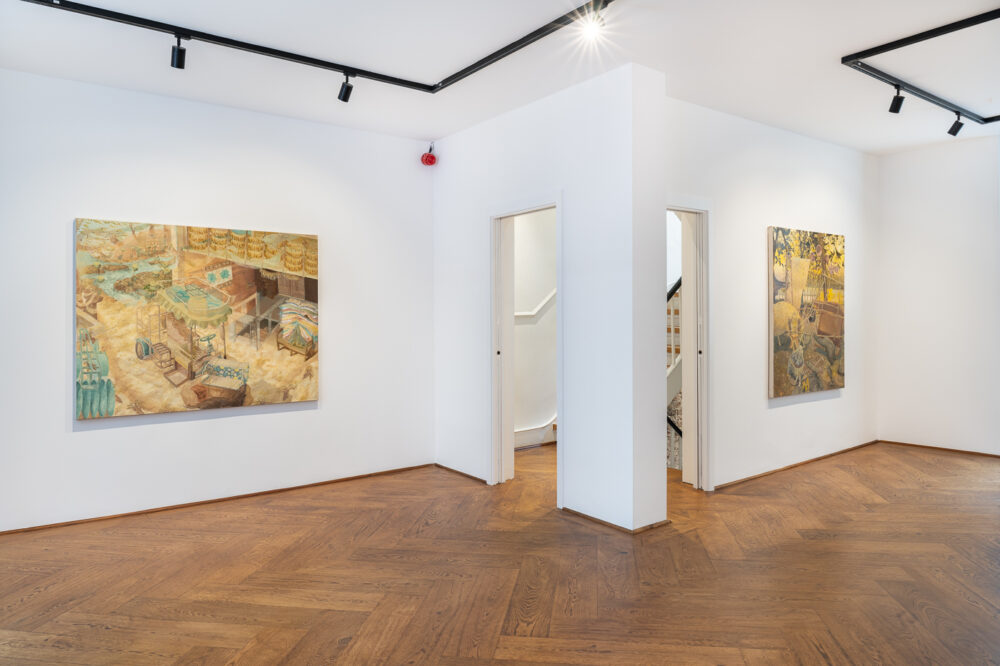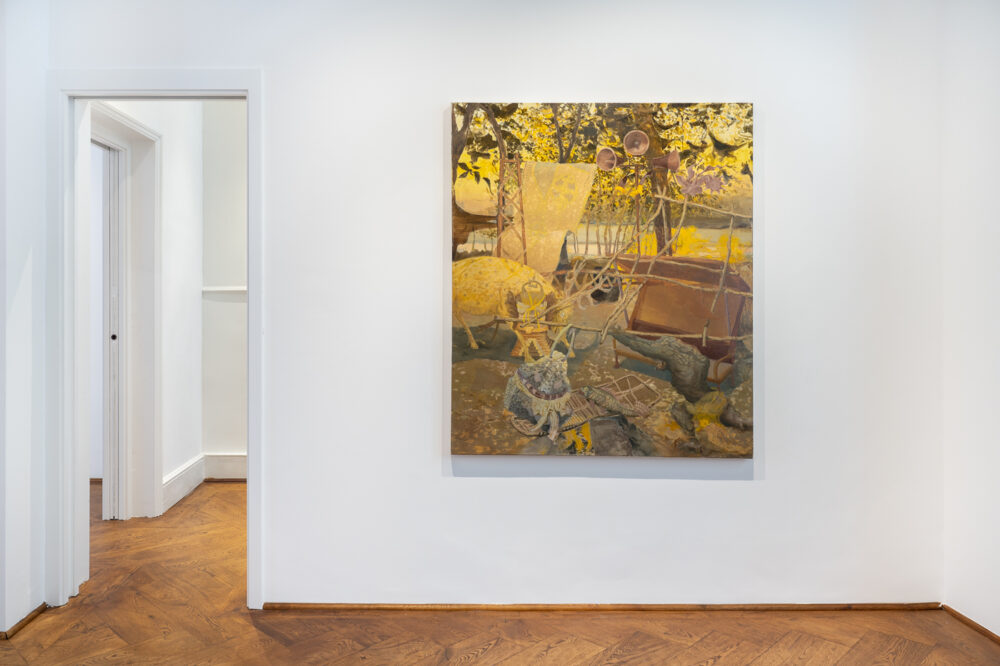The exhibition’s title is a term that anthropologists have appropriated from geologists. Taken from anthropologist James C. Scott’s book The Art of Not Being Governed, it refers to areas of refuge, “where the human shards of state formation and rivalry accumulated willy nilly, creating regions of bewildering ethnic and linguistic complexity.” Where in Scott’s case this describes the vast highlands spanning mainland Southeast Asia, ‘shatter zones’ are generally peripheries resisting the oversight of state and empire. In the eyes of colonial mapmakers and would-be bearers of civilisation, such territory appears perilously confused, ill-disciplined, and all too often impassable.
Densely composed, Han’s paintings are likewise comprised of shards of ungoverned material. The titles of the paintings suggest the beginnings of narrative, while a closer look reveals a patchwork of specificity: local areas of command, conflict, and exchange. Han’s paint may describe objects with inviolable ties to places and cultures, but they resist identification and deny citation. The works are likewise populated by figures whose business is unknown and whose motivations we can only guess.
